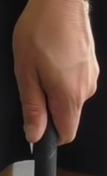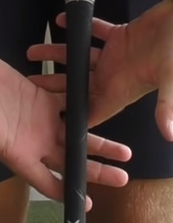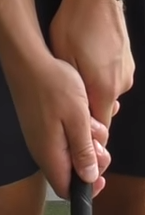How to Swing a Golf Club for Beginners
Golf is a sport that can be enjoyed by anybody at any age. It is one of the only sports that allows players of any ability and age to play together and still have a great time. Picking up golf, however, is often times easier said than done.
The foundation of every player's golf game, the golf swing, is the thing the majority of people struggle with the most. Pros and advanced players make it look so easy. But minor differences in the way you hold your club, how you bend your knees, the distance between your feet, and how far away from the ball you stand can have a major impact on how well you contact the ball as well as the ball's flight.
If you are new to golf and looking to jump in, it can be overwhelming and seem overly complicated. Don't worry. Take a deep breath and relax. This article will attempt to simplify how you swing your golf club so you can get out there with actionable steps to take in order to improve as quickly as possible.
How to Grip Your Golf Club
The very first aspect to any golf swing is the grip. After all, it's pretty difficult to swing a golf club without first holding it in your hands. Using the same grip on every shot is crucial to learning consistency. Making sure your grip is correct will also improve your ability to strike the ball cleanly.
Any change to your grip will feel weird at first. But hang in there, it will feel natural after just a round or two. Just keep in mind that the first step to playing good golf is mastering the grip.
These tips will be from a right hander's perspective. If you're left handed, just replace left with right and vice versa. Let's get to it!
Hand Positioning for Your Golf Grip
Grab a club, it's time to learn how to grip your club. Your left hand should be near the top of the club. There should be at least 1/2" of the top of the grip sticking out. How much is sticking out will ultimately depend on your height and the length of your golf clubs.
Now, place your left hand on the club, pointing the thumb down as shown in the image.


Interlock your left index finger in between the pinky and ring finger on your right hand. See image.
Loosely wrap your hands around the club. The thumb and main index finger knuckle on your right hand should form a "V" that is split down the middle by the golf club.

It might feel a little awkward at first, but that is normal. Make sure it isn't uncomfortable (i.e. causing pain). You also want to make sure hand and wrist mobility isn't restricted by your grip.
Grip Tension
You want to make sure you grip the club firmly enough that it won't move in your hands during your swing. Make sure, however, that you aren't squeezing the club either. There should be very little tension between your fingers and the clubs.
Your hands should be relaxed and you should be softly gripping the club. Again, firm enough so the club doesn't rotate or shift during the swing, but soft enough that you aren't squeezing the club anywhere.
Proper Way to Swing a Golf Club
Ideal Posture
Your posture is another key aspect of your golf swing. Good posture ensures you have proper balance throughout the swing.
You will be bending both at your knees and at the hips. The bend at the knees is slight, just enough to make sure your legs, and specifically your quads, are relaxed. If you are squatting like you're about to sit on a toilet, you are bending way too much at the knees. Your quads should not burn or feel fatigued at any point.
The bend at the hips is a little more pronounced. With your knees slightly and comfortably bent, bend at the hips so that the balls of your feet become the center of balance. This will allow you to maintain balance as you rotate your hips and shift your weight during your swing.
Keys to a Perfect Golf Swing
I'm going to tell you something that is better for you to learn now, early on, than later. You will never have a perfect golf swing. You may think some pros have a perfect swing. But I assure you, the top golf swing instructors could find issues with every swing on the PGA tour. Now that we've gotten that out of the way, let's move on.
The keys to a nearly perfect golf swing are correct fundamentals. And the way to learn correct fundamentals is to learn them one at a time. Start with the grip. Practice with it. A lot. Get to the point where it is second nature and your grip requires little to no thought. Then do this with each fundamental.
Learning the fundamentals is difficult for a lot of people. It takes more than a good grip to hit good golf shots, so when you are mastering the grip and hitting terrible shots, it's frustrating! We know it is. But stay the course and keep practicing. Despite the frustration, master each golf swing fundamental one at a time.
Straight Arms
You want to start your swing with straight arms (but loose). On the back swing, your right arm will bend, but you want to keep your left arm as straight as possible. Your left arm should be straight through the entire backswing up until contact with the ball.
At contact with the ball, both arms should be straight (for now; this changes as you advance). As you follow through, your left arm will now bend, and you want to keep your right arm as straight as possible. Proper shoulder rotation is key to keeping the left arm straight in the back swing and the right arm straight in the follow through.
Body Parts Moving in Unison
Your shoulders, hips, and arms should all rotate in unison. One should never be rotating faster than any of the others. Correct rotation results in square square shoulders, and straight arms directly in front of your shoulders and hips at impact.
Golf Swing Tips for Beginners
One of the biggest tips we can give is something we have to tell the beginners we work with over and over again: don't swing too hard! Especially the men out there. For some reason, guys stand over the ball and try to hit the shell off it. Relax. Take a deep breath. Focus on a smooth, controlled swing. Your muscles, your back, and your golf score will thank you.
Another tip is play how you practice. It's very common to take some practice swings before taking your actual shot. Try to use the EXACT same routine in your practice swing as you use in the real shot.
Keep your eyes on the ball. Don't look up for at least 1 to 2 seconds after you hit the ball. Just don't do it. In the beginning, remind yourself on every single shot: keep your eye on the ball. Keep that head down no matter how badly you want to lift it.
Take these tips seriously. Write them down and go ever them every time you play, on every shot if you have to. This alone will make it so you have far fewer mishits. It will also make it much easier to work on the fundamentals of your golf swing.
